Scientists are racing to perfect green energy to improve the environment and reduce dependence on other oil and fossil fuels.
Some predict that the future will be the hydrogen economy, but many experts say that solar power is the right path.
A number of projects involving high wind turbines or antimatter engines are also considered as future energy sources. The following are the sources of energy that are and will be used in the near future.
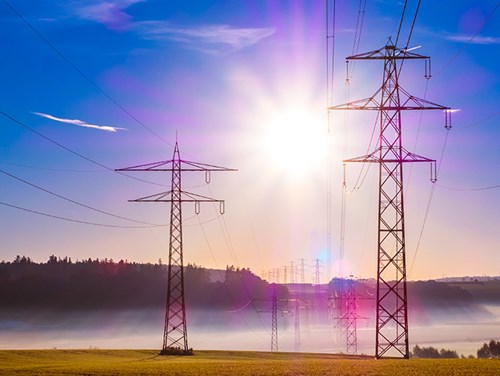
Solar
According to a report by the International Energy Agency, by 2050, the sun could become the largest source of electricity, including fossil fuels, wind energy, hydropower and energy. nuclear. Back in 2006, a giant 1km solar tower with 32 gas turbines with a total capacity of 200 MW came into use. The solar system is surrounded by a giant greenhouse that heats the air to rotate the turbines around the tower. Experts estimate that power plants will be able to generate 200 megawatts of electricity and reduce the amount of greenhouse gases by 700,000 tons per year. And most recently, Topaz solar power plant with a capacity of 550 megawatts with 9 million photovoltaic panels, covering more than 24 hectares in California, USA.
This is considered to be the largest solar power in the world today and Topaz provides electricity to about 160,000 households.
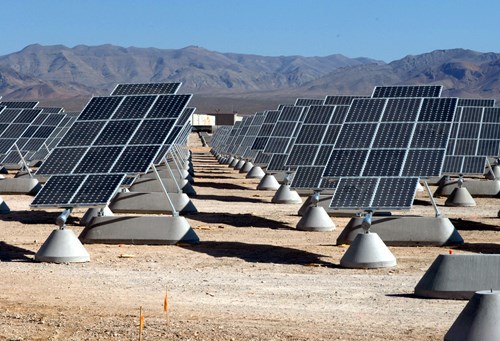
Solar power plant
The solar system does not require any additional fuel to operate and the impact of environmental pollution is almost nonexistent. Sunlight can be saved as heat for immediate use or converted into electricity. In addition, the technology allows the conversion of light into electrical energy through the photovoltaic effect. The limitations of solar energy systems include the high initial cost of space required. In addition, for most solar alternatives, performance may be affected by air pollution and weather that reduces the amount of sunlight.
Coal
Coal has been a source of energy for the industrial revolution and it still plays a huge role in meeting the world's energy needs. The main advantage of coal is that it is abundant enough to supply the world in the next 200 to 300 years with current consumption. Due to the large reserves, coal has high economic value and easy to exploit. However, the use of this material creates many impurities such as sulfur and nitrogen that mix into the air or can combine with water in the air to form acid rain. Coal combustion also produces large amounts of carbon dioxide, which, according to scientists, is contributing to global warming.
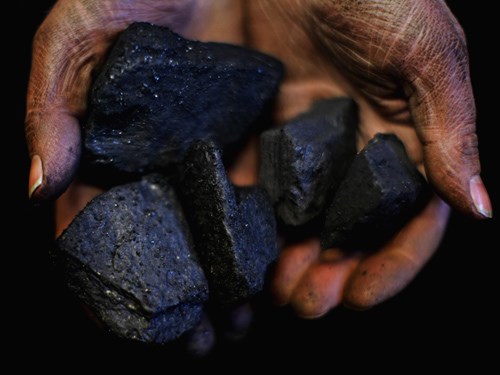
Coal is huge enough to supply the world in 200-300 years
Wind
Wind energy is an indirect form of solar energy. Using wind energy is one of the methods of gathering energy known from ancient times. The concept of using windmills is stepping up as scientists are trying to create electricity in the sky by floating a windmill at a height of 4.5 kilometers in the atmosphere. The system is equipped with four propellers and two turbines to generate electricity from the wind. Wind power now accounts for only 0.1% of the world's electricity needs, but that number is expected to grow as fast and one of the forms of clean energy in the future. The expansion of wind power is also difficult because the system depends on the location of the strong wind. Fears indicate that wind farms may affect local weather, but this has not been thoroughly studied. Scientists hope that the use of windmills in the sky will address these constraints because it is a strong and continuous wind.
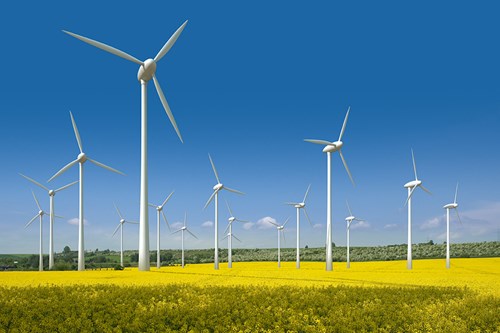
Generators use wind energy
Oil
This fuel is known by some as black gold, showing its importance to humans. The great nations of the world rely on oil, and this is also the source of many wars. One of the reasons that gasoline and oil is so valuable is that it can be transformed into a variety of products, not just energy but also many other important products of high economic value. This is also one of the fossil energy sources that have large reserves but are not renewable. Some scientists predict that oil production will peak in the near future, and the Organization of Petroleum Exporting Countries (OPEC) says oil prices will not be able to surpass $ 100 a barrel in the first place. decade.
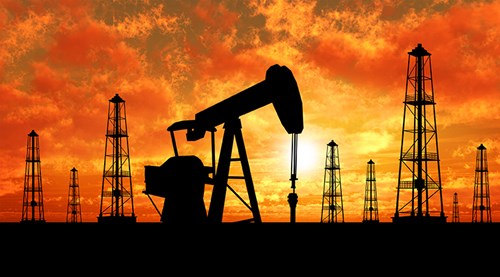
Oil exploration will reach its peak in the near future
Like coal and natural gas, oil is relatively cheap compared to alternative sources of energy but its use comes with significant environmental damage. Using oil produces large amounts of carbon dioxide, and oil spills can harm ecosystems and are very difficult to clean.
Biomass - biomass fuel
Biomass energy, or biofuel, includes substances that contain the chemical energy stored in organic matter. Biomass residues are agricultural residues (straw, bagasse, corn husk, ...), forest residues (dried leaves, wood chips ...). Biomass fuels can be solid, liquid, gaseous ... are burned to release energy such as ethanol or into biogas.

Biofuels
But unlike some other renewable sources, biomass energy is not really clean because organic fuels produce large amounts of carbon dioxide. In addition to widespread use, one has to find ways to make up for it by planting fast-growing plants and grasses for use as a source of fuel. Scientists are also experimenting with the use of bacteria to manipulate biomass and produce hydrogen for fuel. This is a rather interesting alternative but interesting source of biofuels in the process of heat transfer (TCP). Unlike ordinary natural fuels, TCP can convert virtually any organic matter into kerosene and water, but the amount of greenhouse gases that can be reduced is not reduced.
Hydroelectric
Hydropower currently accounts for 20% of the world's electricity. Up until recently, hydropower has been argued that water power is a rich natural resource that requires no additional fuel and no pollution. Recent studies, however, show that some of the challenges posed by hydroelectric dams can cause significant amounts of carbon dioxide and methane through the decomposition of submerged vegetation materials. One drawback of the dam is that people living around are often displaced. In the case of the Three Gorges Dam Project in China - the largest dam in the world when completed in 2009 - 1.9 million people have been displaced and countless historic sites have been flooded and disappeared. . And a major problem of hydropower is the inadequate damming of rivers and dams that will alter ecosystems in the area and cause one of drought and floods.
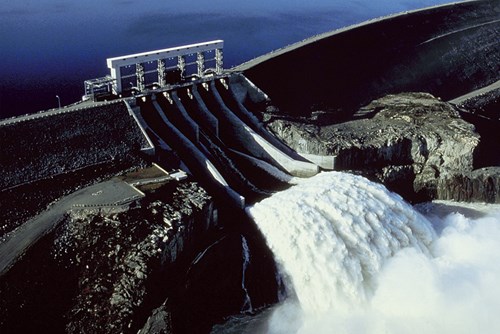
Hydroelectricity is an important part of the energy source
Ocean energy
Oceans cover 70% of the surface of the Earth, and water is a natural solar collector. The conversion of thermal energy of the ocean (OTEC) to exploit this energy collector and use the temperature difference between the surface of water heated by sunlight and the source of water energy below the depth of the ocean to generate electricity. The OTEC factory is divided into three categories:
Closed Cycle: A liquid with a low boiling point such as ammonia heated with warm seawater. The steam generated is used to operate the turbine generator and then is cooled with cold sea water. But the evaporator and condenser of this system must use a bulky heat exchanger, consume a large amount of metal, and difficult to maintain.
Open Cycle: Similar to the closed OTEC cycle, except for the absence of low intermediate liquids (such as propane, isobutane, freon, ammonia ...). The system makes boiling water in the evaporator and converts into steam. Steam runs from the turbine nozzle to generate electricity. Breathing from the turbine into the condenser is cooled by cold sea water.
Cycle Cycle: Closed OTEC cycles are used to generate electricity, which then creates the low pressure environment necessary for the opening cycle.
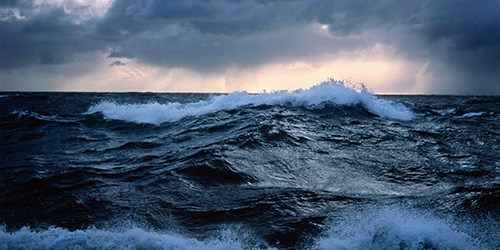
Oceans cover 70% of the Earth's surface and is a natural solar collector
The OTEC plant can increase fresh water supplies, and more sea-level nutrients from the ocean floor can be used to grow microorganisms and marine plants. The main limitation of OTEC is that the conversion of heat energy into electricity is too low when the system operates on a small temperature difference, usually around 20 ° C.
Nuclear energy
Albert Einstein said that the boundary between matter and energy is not clear. Energy can be created by atoms - the process of splitting or combining is called fission and fusion respectively. Radioactive fission is harmful and generates large amounts of radioactive material, which has the effect of thousands of years and can destroy entire ecosystems if leaked. The bigger concern is that nuclear power has been used as a formidable weapon.
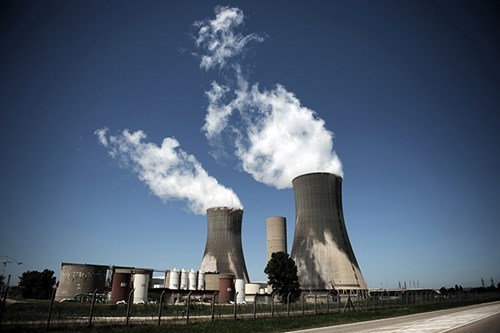
Nuclear power plant
At present, most nuclear power plants use fission, which requires large amounts of energy to produce and maintain at high temperatures. The idea of fusion sound synthesis - technically known as fusion inertia - is derived from a sonolumi-nescence. The principle here is to use loudspeakers attached to a liquid-filled container and then transmit pressure waves, which stimulate the movement of sound waves. These bubbles grow and break, creating visible flashes, lasting no more than 50 picoseconds. The foam produces temperature and pressure that can reach the fusion startup level. Scientists are also working on a way to produce controlled fusion reactions by pushing "heavy" hydrogen ions into a strong electric field.
Fuel cells
At the time of its appearance, hydrogen fuel cells were considered a perfect substitute for fossil fuels. Scientists can create electricity using hydrogen and oxygen without affecting the environment. Hydrogen fuel cell vehicles not only deliver better performance than internal combustion engines, but their unique emissions are water.

Fuel cell vehicles
Unfortunately, while hydrogen is the most abundant element in the universe, most of it is attached to molecules like water. That means pure hydrogen must be produced by other sources of energy - which in many cases involve fossil fuels. Another problem with hydrogen is that it can not be compressed easily or securely, and requires large tanks to store. In addition, hydrogen atoms tend to leak through the container material.
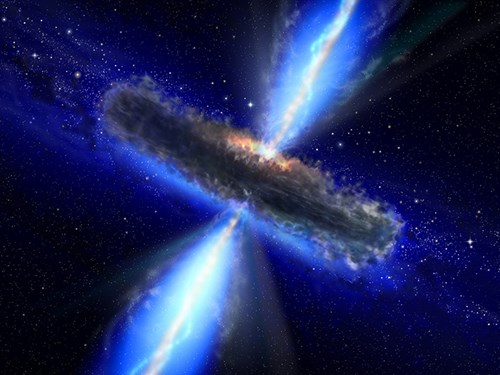
Antimatter can not have practical application
Antimatter
Antimatter is a concept in physics, made up of fundamental antiparticles such as electrons, neutrons, etc. In theory, if antimatter encounters matter, it will cause explosion and resolution. The massive energy, calculated by Einstein's famous equation, E = mc2.
Antimatter has been used in medical imaging technology called positron emission tomography (PET), but its use as a potential fuel source remains in the field of science fiction. Antimatter can be produced in the laboratory, but currently accounts for only a very small amount and at an extremely high cost. Even if the problem of production can be solved, it is still a difficult question to answer as to how to store something that tends to self-destruct when exposed to ordinary matter and so to harness the power generated.
Add: 46/10/23 Nguyen Cuu Van, Ward 17, Binh Thanh District
Tel: 028.22.179.235 - 0963.068.784 - Fax: 208.3898.3729
Email: snt-info@snt-electric.com.vn - Website: www.snt-electric.com
Hotline